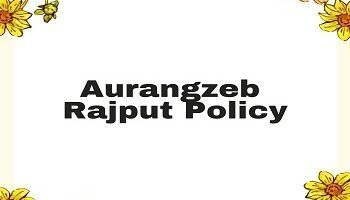- The Khilji (khalji) people were an ethnic group from Western Turkistan.
- Their ascendancy is known as the Khilji Revolution because it marked the end of monopoly of power by the Turkish nobility & racial dictatorship.
Table of Contents
Jalauddin Firuz Khilji (1290-96):
- Ali Gurshasp (later sultan Alauddin Khilji) was the nephew & son-in-law of Jalauddin Firuz Khilji.
- After the downfall of Malik Chhajju, Alauddin was appointed as the Governor of Kara near Allahabad.
- In 1292 A.D. in the expedition of Malwa & Bhilsa; he had managed to collect a huge amount of booty in gold & jewels which he handed over to his uncle Jalauddin to win over his confidence & affection.
- In 1296 A.D. he led an expedition against King Ram Chandra of Devagiri & after defeating him he got an enormous amount of wealth form him, he invited the Sultan to come to Kara to receive the enormous wealth brought from the Deccan as present, he got him murdered in cold blood & then proceeded to Delhi to acquire the throne.
Alauddin Khilji (1296-1316):
- Theory of Kingship was based on “Kingship knows no kinship“.
- He did not ask for manshur (letter of investiture) from the caliph but called himself the deputy of the caliph (Yamin-al-Khalifa).
- He assumed the title of “Sikander-i-Sanni“. He is terming himself as Second Alexander.
Military Campaigns:
- 1297 A.D. –
- Gujarat under Raikaran.
- military campaign take place under the joint command of Ulugh Khan & Nusarat Khan.
- Sacked Anhilwara & Somnath.
- Married Kamaladevi, queen of Raikaran.
- Alauddin’s commander Nusarat Khan bought Malik Kafur. He was Hindu Convert of Baradu Caste, also called Hazar-Dinari, he conquest South India.
2. 1300 A.D. –
- Ranthambore under Raja Hamirdeva.
- Nusarat Khan was killed in this expedition.
3. 1303 A.D. –
- Chittor, the capital of Mewar under Raja Ratna Singh.
- Amir Khusrau, who accompained Alauddin Khilji in this expedition, in his Khazain-ul-Futuh gives an account of the conquest of Chittor & also refers to the practice of Jauhar.
- Malik Muhammad Jayasi’s Padmavat, the main objective of Alauddin Khalji invading chittor was to acquire Padmini, the queen of Rana Ratan Singh.
- Khizr Khan was made the Governor & renamed it as khizrabad.
4. Deccan –
- Alauddin decided to send an expedition , under the command of Malik Kafur, for the Conquest of South India.
- 1307- Yadava kindgom of Devagiri- Ramchandra. Ramchandra or Ramdeo submitted without much resistance. He was presented one lakh tanka, a golden canopy (chatr) & the title of Rai Rayan. Ramdeo , in return, gave his daughter Jhatya pali in marriage to Alauddin Khalji.
- 1309-10- Kakatiya kingdom of Warangal – Pratap Rudra Deva-II.
- 1311 – Hoysala of Dwarasamudra – King Vira Ballal III.
- 1311- Pandyan Kingdom of Madurai – Vira Pandya. Malik Kafur desecrated the Nataraja temple at Chidambaram & captured elephants & treasury.
The conquest of Alauddin Khalji is called Khalji Imperialism.
Administrative Reforms:
- Factors Responsible –
- Excess wealth with people makes them rebellious.
- Wine.
- Alliances & powers of nobles posses problems.
- Sultan doesn’t know what is going on in the empire until it is too late.
- Alauddin’s Response –
- He revoked the revenue free grants (Mulk-i-Inam & Waqf land) given to various people including religious ones. He abolished the privileges of Khuts & muqaddams & instituted revenue reforms to draw all the surplus into state coffers.
- He banned wine, though it couldn’t succeed. Later it was modified to prohibit in public places.
- He banned intermarriages & interdining.
- He built an elaborate spy system.
Military Reforms:
- He discontinued the practice of land grants to military & paid them in cash. He fixed the salary for each grade.
- He maintained a large standing army under his control directly.
- He introduced the system of Dagh (branding of horses) & Chehra (Huliya or maintain the descriptive role of each soldier).
- He carried out regular inspections.
- The booty captured during war was called ghanima, of which the state was to receive 1/5th share called the Khums, the rest 4/5thwas to be divided among the soldiers. Alauddin reversed this & the state was now entitled to 4/5th as khums, 1/5th being distributed among the soldiers.
Revenue Reforms:
- Zabita – related to the measurement of cultivable land; biswa (1/20th of a bigha) was declared to be the standard unit of measurement.
- State demand fixed as half of the produce per biswa & assessment was done on the basis of paimash (measurement).
- Land was assigned to the nobles on the basis of Bhaga (land-revenue), Bhoga (cesses) & Kar (taxes).
- He introduced two agricultural tax – Ghari (House tax) & Chari (Grazing tax).
- Doab & small iqtas brought under Khalisa (Crown Land).
- Revenue was collected directly by the state in Khalisa land.
- Established a new department called the “Diwan-i-Mustakharaj“(to inquire into revenue arrears & collect them).
Market Reforms:
- Prices of the commodities were fixed on the basis of availability & distribution & no change was permitted in the commodities prices without the state permission.
- Cultivators were not allowed to hoard.
- Four separate markets were established- Central grain market, market for manufactured goods, market for general merchandise and market for horses, cattle & slaves.
- Each market was put under the charge of a shuhna or controller of market.
- Shuhna, Barids (intelligence officers) & munshis (secret spies) provide daily market report to the sultan.
- Strict punishment for cheating & under-weighing.
- Appointment of Banjaras or Karwanis – They are basically carrying goods from one place to another.
- State subsidized the prices of the costly or imported commodities. Such items were sold on permit issued by Parwana Rais.
- Sarai-i-adl – market for clothes.
- Sultan did away with the intermediaries (middlemen & dalals) & asked the merchants (Afghans & Multanis) to sell the horses directly to the diwan-i-arz.
Architecture:
- Alai Darwaza (famous gateway) entrance to Qutub Minar.
- Siri City – Construct his new Capital.
- The Palace of thousand pillars, Hazar Sutun was built by him.
- Big tank constructed in Delhi called Hauz-i-Alai.
Mubarak Khilji (1296-1316):
- After Alauddin’s death, his son Mubarak Khilji (1316-20) succeeded after putting Malik Kafur to death.
- Mubarak took the title of Al Wasiq Bilah & declared himself the Khalifa.
- He was killed by his beloved Khusrau Khan , an Islamicised Baradu (Hindu), who took the title of Nasir-ud-din in 1320 A.D. & became the only Hindu convert to become a Sultan of Delhi.
Nasir-ud-din- Ghazi Malik, the Governor of Dipalpur & his son, Fakhr-ud-fin Jauna beheaded Nasir & Ghazi ascended the throne under the title of Ghiyas-ud-din Tughlaq.









Comments (No)